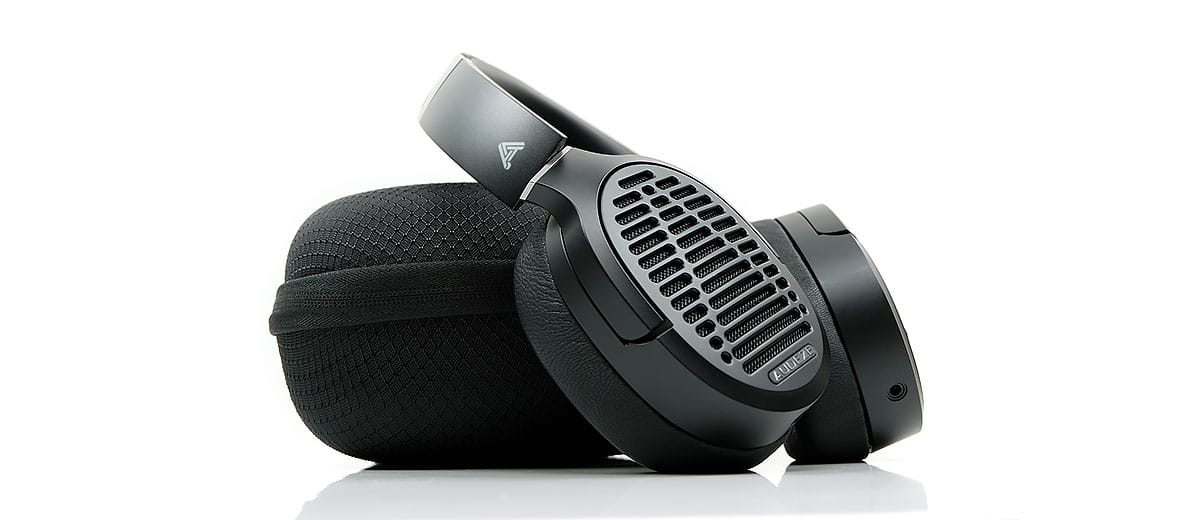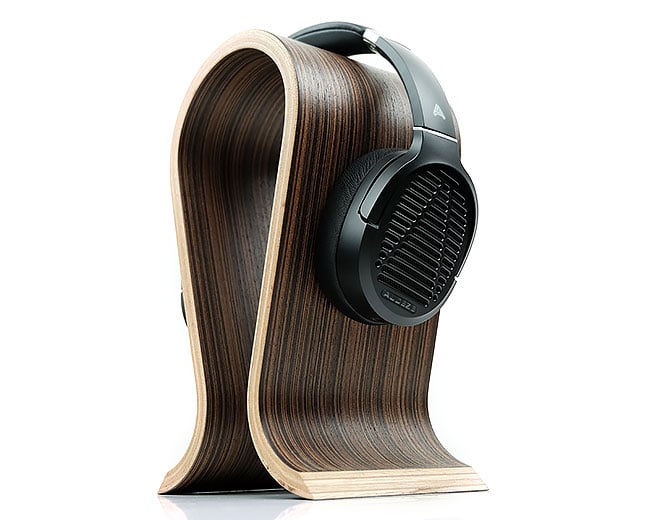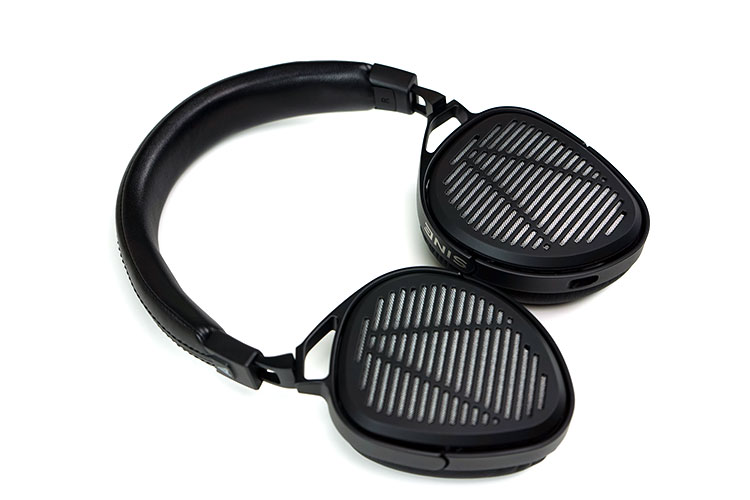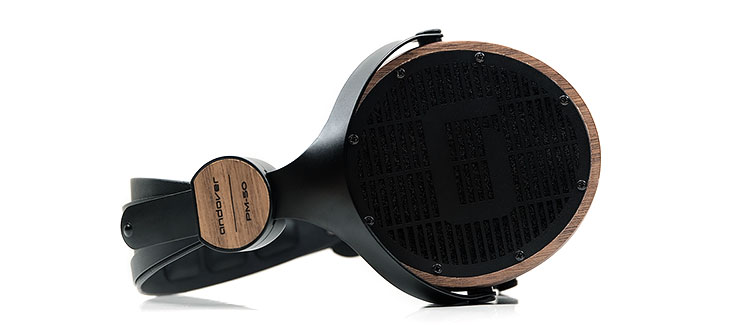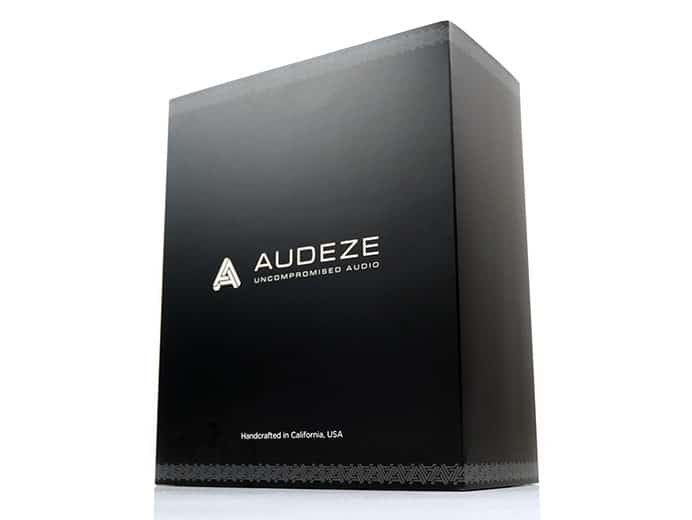Sound Impressions
Summary
For those that are thinking this might be a SINE DX light then you will be mistaken. The LCD-1 is its own creation despite retaining some key aspects of what I consider to be essential Audeze.
This is a smooth but controlled performance with a relaxed feel to its delivery and very little in the way of dominant spikes. The LCD-1’s coherence is also slightly north of neutral for general warmth in its timbre but still very much on the natural side. My tendency is to think of a light touch rather than a heavy embrace in terms of how the notes are presented to the listener using the LCD-1.
At a high level, the LCD-1 does have reference qualities in the sense the bass is more controlled than what I am used to hearing from an Audeze headphone. It has that classic planar bass response down to about 50Hz before it starts to fade marginally into the sub-bass.
However, it not exactly dead neutral, there is a mild bump around the 100Hz marker that allows that nice underlying tone of warmth and an above neutral level of body to slip into the lower-mids. I have always felt an Audeze headphone must have great lower-mids and the LCD-1 keeps up that tradition albeit with less bombastic fervor.
That bass to mids transition up to around 1-2k is very smooth, however. From there is more of a rise from around 2k to 4k which is a different emphasis to the SINE DX’s more aggressive 1-2k bump. You will hear that in how vocals come across with the SINE DX placing them very close and the LCD-1 a little further back.
The elevated upper-mids of the LCD-1 are not harsh sounding either with less of a dominant lower-treble presence before it moderately tips upwards again right at the upper treble around 8-10k. Certainly, it is much more even sounding than the SINE series which has a glassier tone to its treble response.
Reference?
I get why they are referring to the LCD-1 as ‘reference’ like in terms of control and relative coherence. It is not like the SINE DX at all which was an exciting sound but also the sum of 3 dominant areas: sub-bass, vocals, and treble presence.
The LCD-1 is not the last word in terms of resolution but you get a much better appreciation of the whole rather than a memory of individual passages of music.
Staging
Despite being an open-back the LCD-1 staging performance is relatively rounded sounding. Not bad, but not huge either. It does not stretch the stage quite in the same manner as the SINE DX so you could argue it is not as colored in its imaging and where it is placing instruments.
The depth is still there but not to the same quantity and forwardness as previous Audeze’s creations have often tended to make a play on. In that sense, the imaging is relatively neutral to the upper-mids which get a push further forward.
What I did notice was a tiny bit of slice and dice around that upper-mids. What I mean by that is for higher pitching vocals to be to the fore with a little drop on either side so they stand above the rest of the instrumental imaging spread a bit more.
It is not glaring and perhaps a useful trait for referencing. How much you notice it will depend on what headphone you are used to listening to. Headphones with more dominant lower-treble performances such as the Alara do bring percussion much further into the staging mix than the LCD-1 which can change the balance considerably.
Whereas something like the Andover PM-50 leaves it all on the 4k marker with a much thicker sound and no 8-10k peak. Compared to this planar headphone tuning, the LCD-1 does indeed have more staging headroom.
Timbre
Ah, the timbre, it is just wonderful sounding and right up my alley for a wide range of genres. For anyone who loves that analog-type 70’s synth or that Les Paul type guitar chord crunch then the LCD- 1 is going to sound perfect.
I am not talking about a hyper-clean precise or dry timbre though; I have heard plenty of great headphones that excel in that precise sound. The LCD-1 timbre is a little more rounded than that due to the lower-treble fade and lack of lower-mids dip that retains a healthy even-harmonic balance to the signature.
It was clever of Audeze to ensure that the upper treble has some sparkle to it but not overdo it. This even-handed approach prevents the timbre of the LCD-1 from going slipping into something more on the ethereal side. At the same time, the tuning also prevents the smoothness from dulling down perceived clarity so this is not a lush sound signature.
Dare I say slightly euphonic at times? Possibly but that just might be me feeling pleased with what I am hearing.
Synergy
The LCD-1 is rated at 16Ω and 99dB SPL. That sounds wonderfully efficient, doesn’t it? Quite a far cry from the old nuclear plant in the corner with your 500g planar headphones from several years ago. And indeed, it seems out of a Samsung Note 9 the LCD-1 sounds ok or at least sounding sufficiently loud and reasonably peppy.
Look closer though and that volume slider is almost 100%, so no. Samsung’s Note 9 does not have enough headroom to really drive the LCD-1 well enough. More than that, at times the treble sounded a shade on the bright and lean side.
What I have noticed is the difference when you up the power to something like the 0.5W Lotoo PAW Gold Touch. Things are much smoother and the treble is more liquid or fuller sounding. The LPGT is known to be a little on the neutral to bright side but with the LCD-1 it wonderfully balanced and natural sounding to me.
Pushing it even higher to the 1.8W (32Ω load) single-ended output of the Monolith Liquid Platinum and the AK380 as the source was ridiculously good for this price point. I threw on the remastered Def Leppard Hysteria vinyl recording which is known to be a touch on the bright side for unforgiving headphones, especially on percussion and their layered vocals. The LCD-1 sounded absolutely spot on, not a sibilant or lean note in sight.
So yes, do not plug this into a smartphone expecting amazing things despite the lovely specifications that suggest otherwise. The LCD-1 likes power, it can scale. A decent DAP may well be a recommended pairing.
Select Comparisons
Audeze SINE DX
$599
Technical
The SINE DX started out as a limited edition unit but now sadly discontinued. I suspect the larger LCD-1 has pushed the SINE range to the background a little and I can well understand that with the more competitive price point, better physical articulation, and comfortable fit.
Inside, and despite using similar planar technology such as Audeze’s Fluxor™ magnets and Ultra-thin Uniforce™ diaphragm, the LCD-1 uses the larger planar driver at 90mm compared to the DX’s 80mm diameter.
Design
That should come as no surprise since the form factor of the LCD-1 is a large supraaural compared to the smaller on-ear of the SINE DX. However, the weight of the SINE DX is actually heavier than the LCD-1 by 40g. Much of that has to do with the more premium level of materials used in the SINEX DX build.
The SINE DX uses a mix of premium leather for the band and cups and some solid aluminum alloy for the gimbals and frame finished in matte black paint. The LCD-1 is more of a blend of dense well-formed and lighter plastics with larger leather ear pads.
It feels cheaper but it is comfier on the ear than the hard clamping SINE DX and folder into two into a much smaller carrying case. There is also less adjusting for a sweet spot which the SINE DX is notorious for. Any slight pressure on the seal of the DX throws off the presentation tremendously. The LCD-1 is more consistent in that regard.
Synergy
The SINE DX is rated at 18Ω and 102dB SPL compared to the LCD-1’s 16Ω and 102dB. That does not seem like much of a gap and truth be told both headphones will work just fine from regular sources such as DAPs and even some good quality smartphone jack outputs.
The current demand is the only key efficiency difference between these two with the LCD-1 the more demanding at up to 5dB more on something like the 0.5W capable Lotoo PAW Gold Touch.
What you will notice is the enhanced intimacy and punch of the SINE DX presentation at a lower volume. The SINE DX does bring you closer to the drivers design-wise so it can sound a bit more impactful on weaker sources with its stronger bass response. Whereas the LCD-1 pulls you back a bit more with the effect you tend to throw up the volume 2-3dB more to compensate.
Like the DX, however, the LCD-1 is more responsive with a better amp or more power. With better amplification, the SINE DX upper mids and treble are far less brittle whereas with weaker sources it can sound harsher than the LCD-1. The LCD-1 gets a bit of solidity also in the mids with better amping with male vocals, in particular, showing better texture and resolution.
Tuning
The tuning on the SINE DX is a little more ‘musical’ when compared to the LCD-1. So, what does that mean then? Well, on the low-end it has a bit more weight with a heavier sub-bass presence. The LCD-1 is a more linear, perhaps a shade more mid-bass lift but also more sub-bass roll-off when compared to the SINE DX.
The SINE DX dips marginally more into the lower-mids whereas the LCD-1’s transition is smoother up to 1k. You get a bit more instrumental presence on the LCD-1 which is that classic LCD lower-mids sound.
Beyond that, there is a big difference in the mids and treble. The SINE DX really pushed forward that 1-2k band where a lot of vocals get their presence from and as a result it can sound more immediate with vocals front and center.
The LCD-1 is not as elevated in that region. Instead, it offers more emphasis to the upper mids 2-4k, right where the SINE DX starts to fade. Vocals, to a point, sound more relaxed on the LCD-1 and also a bit smoother.
The SINE DX pulls from a heightened 8-10k region which is not as pumped forward on the LCD-1. That push adds a bit of zing or a partial overtone on the SINE DX timbre. It has an effect of sounding ‘crisp’ but also at times more ethereal with a glassy quality to some percussion notes.
The LCD-1’s muted lower treble and comparatively slightly toned down upper treble adds more wetness to percussion and a bit more body. It might sound less extended than the SINE DX but the tone is more balanced, smoother, and forgiving to my ear.
Andover Audio PM-50
$599
Technical
We have just started our review process on the PM-50 with a First Contact out a few weeks ago. This is a new brand for but they are working on a similar pitch as the LCD-1 with a reasonably compact open-back planar headphone design.
There are, however, a lot of differences between these two internally and externally. The PM-50 uses a much smaller 50mm square planar driver design and most likely double-sided though no specific mention of that in the specs. The LCD-1 uses a larger 90mm diaphragm with a lot more detail regarding their Fluxor™ magnets and Ultra-thin Uniforce™ diaphragm.
Both come with single-ended dual-entry unbalanced nylon jacketed cables terminated with 3.5mm TRS jacks at either end and 6.35mm converter jacks. However, they are not swappable as the LCD-1 jacks are much shorter and do not get a full connection in the PM-50.
Design
Huge difference here and perhaps a lot of the additional cost of the PM-50 can be accounted for with that beautiful rich grain walnut and silver trim cup enclosures and matte black dual-steel headband. By contrast, the LCD-1 is a plain jane with its plastic materials and an all-black aesthetic.
I give kudos though for the LCD-1’s understated but slicker design for portability as well the far lighter weight. Combined with the folding articulation and smaller case it is much more portable than the PM-50. The Andover Audio design feels like it is made more for a desktop solution despite its compact size.
You feel it on the head also with the heavier lateral clamping of the PM-50 getting a bit more fatiguing than the softer LCD-1 fit.
Synergy
The rating of 102dB SPL and 32Ω of the PM-50 compares favorably on paper with the 18Ω and 99dB of the LCD-1. And that is how it plays out in our real-world testing with both sounding optimal on close to similar current or volume levels from our test gear.
I would give only a very slight edge to the LCD-1 on this test and that maybe psychosomatic given their different tuning strengths. The LCD-1 does sound a little tighter on weaker sources such as smartphones and that might be down to the lower impedance level. Once you move up to around 1W on a desktop amp such as the HA-2SE from Auris Audio then both are even.
Tuning
Quite different due to how they handle the mids and treble. Below 500Hz the PM-50 seems a little more linear down to 20Hz whereas the LCD-1 has more of a gentle mid-bass rise and a slightly sub-bass drop off but it is not hugely noticeable.
The real diversion in their presentations is beyond 500Hz where the PM-50 is on an uplift curve to a peak around 4k. There are no dips only a linear rise from the lower-mids into the upper-mids which pushes everything forward and keeps the timbre very warm and rounded.
The LCD-1 is fairly linear from 200Hz up to 1k so the transition is smooth and more neutral sounding. Beyond that it dips marginally from 1-2k then rises to 4k. You get the same relatively forward sounding mids to upper-mids but with that flatter lower-mids, it does not carry as much warmth or thickness. That delivers a little more space, air, and generally better instrumental separation than the PM-50.
Treble on the PM-50 rolls-off much sharper and fast than the LCD-1 which does have a lower-treble dip but then an 8-10k elevation to keep it from sounding dark and attenuated. You get a little more spark on the LCD-1 and a harmonic balance that err’s to the lighter and sweeter side. The PM-50’s lack of air and sparkle delivers a denser richer signature with a stronger vocal focus.
Brainwavz Alara
$399
Technical
The Alara started out at over $500 and is now down to a healthy $399, the same price as the LCD-1. Like the LCD-1, the Alara is an open-back planar headphone design but more to the circumaural end of things than the smaller LCD-1 which I rate as a large supraaural form factor.
Inside, the Alara uses a 70mm diaphragm driver with a dual-sided magnet build with approximately 50-60mm of that size uncovered. The LCD-1 uses a larger 90mm Ultra-thin Uniforce™ diaphragm but with a single-sided Fluxor™ magnet array which saves a bit of weight.
Design
At 430g, the Alara is much heavier than the LCD-1’s 250g measurement. Aside from the additional layer of magnets, the housing is bigger with a weightier mix of metal for the cups and headband and a lighter solid plastic construction for the gimbals.
The Alara pads are detachable hybrid Pu leather and velour pads as opposed to slightly smaller leather pads on the LCD-1. The opening on the inside of the LCD-1 is more of a fit for the general ear with an elongated opening whereas the Alara pads are the traditional circular opening. That means more of the inner wall of the LCD-1 pads clear my ear than the Alara pads.
The fit on the Alara is not great for me personally. The headband is much too long for smaller heads with a very loose clamp on the side to hold it in place. I find it just barely fits on my ears on the shortest setting. NO issues at all on the LCD-1’s lighter and comfier fit with a more accurate headband adjustment mechanism.
Synergy
The Alara is rated at 20Ω and 94dB and compared to the 18Ω and 99dB of the LCD-1 it is not quite as efficient requiring a bit more current to reach a similar volume level.
However, the gap isn’t huge and volume tweaking is minor on 1W or above amps. It is only when you drop down to smartphone levels does the LCD-1 finds a little bit more useful headroom. On weak sources, the Alara struggles a bit more to be heard.
In terms of amping synergy, I do prefer a slightly warmer source or amp with the drier spikier Alara sound. The LCD-1 is a little smoother and comparatively warmer so it sits more comfortably with punchier or more neutral solid-state amps.
Tuning
The Alara has the drier timbre with a more aggressive upper-mids and treble presence compared to the LCD-1. The LCD-1 has slightly more mid-bass and lower-mids warmth but only marginally so, both follow a similar low-end planar bass response with a gradual roll-off into from around 50Hz.
The bigger difference in the mids-tuning beyond 4k. From 1k to 4k both show that classic slide and rise but from there the LCD-1 dips again into the lower-treble up to around 7k whereas the Alara retains more presence and an 8-10k peak that is higher also.
That has the effect of giving it that drier timbre, more odd-harmonic overtone, and sparkle or presence to percussion timbre. The LCD-1 sounds more liquid and forgiving, not as strident on that upper-mids tone given the more subdued lower-treble. Vocals are smoother, less sibilant, and more euphonic in overtone compared to the Alara but lack a little air to breathe.
The Alara sounds more open and expansive in the mids though both have similar depth. The LCD-1 can sound comparatively relaxed and warmer but with less headroom for female vocals. Certainly, the Alara seems taller and wider compared to the LCD-1 though this comes at the cost of a more strident or edgier overtone.
Our Verdict
The Audeze LCD-1 heads in a relatively different and more portable direction than I expected it to go. It definitely looks like an Audeze headphone but it is not as bombastic or in your face as the SINE DX. This experience is more relaxed comparatively speaking but also more coherent and better balanced in its presentation.
And yet, I still feel this creation has some important house sound traits with its assured deference to a quality lower-mids presence that I always look for right away in any Audeze creation. Somehow, sucked out lower-mids would never sit right with me on any LCD series headphones.
I can see how this would be an attractive reference listening experience. Not dead neutral by the way, never confuse those terms as being the same. Rather, the LCD-1 invites you to listen to the bigger picture rather than tease you with dominant bass candy, treacly vocal forwardness, or a frosted treble on top. It is the whole cake this time and at $399 it tastes rather good.
Audeze LCD-1 Specifications
- Specifications Style Over-ear, open-circumaural
- Transducer type Planar Magnetic
- Magnetic structure Single-sided Fluxor™ magnet array
- Phase management Fazor
- Magnet type Neodymium N50
- Diaphragm type Ultra-thin Uniforce™
- Transducer size 90 mm
- Maximum power handling 5W RMS
- Maximum SPL >120dB
- Frequency response 10Hz – 50KHz
- THD <0.1% @ 100dB
- Impedance 16 ohms
- Sensitivity 99 dB/1mW (at Drum Reference Point)
- Ear Pads Memory foam, genuine lambskin leather
- Weight 250g

